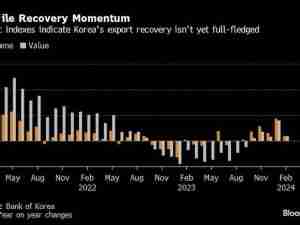German exports unexpectedly rebounded in March, capping what looks like a surprisingly solid quarter for Europe’s largest—and recently enfeebled—economy.
Exports climbed 1.5 percent from February and imports, a sign of domestic strength, rose 0.4 percent. Economists had forecast that exports would decline. The nation’s current account surplus almost doubled to 30.2 billion euros ($34 billion), the widest gap in two years.
The data signal a possible upturn after months in which the nation’s factories have been hit by slowing global demand and temporary shocks such as disruption to the car industry and low river levels. That would be a sizable boost to the euro zone—the region’s slowdown has prompted European Central Bank officials to debate whether the bloc needs more stimulus.
German industrial output also unexpectedly advanced in March, figures showed earlier in the week. Factory orders climbed, albeit at a slower pace than forecast. German first-quarter GDP figures will be released next week.








